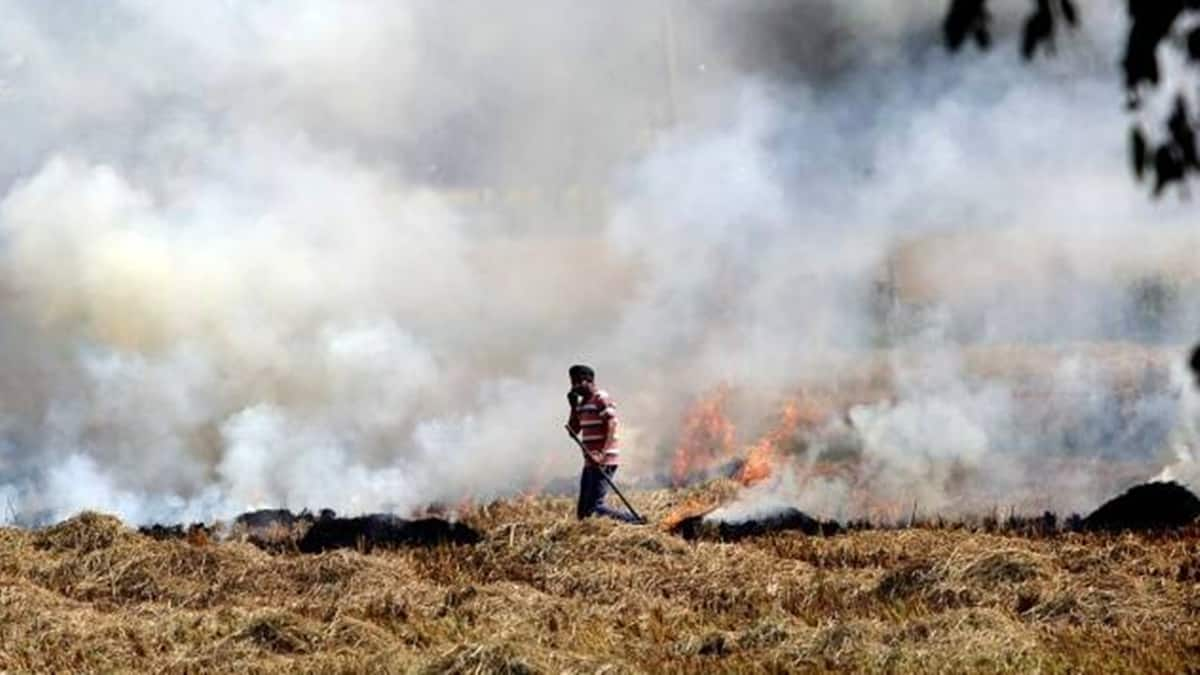Incidents of stubble burning after paddy harvesting in Punjab, Haryana, Uttar Pradesh, Madhya Pradesh, Rajasthan and Delhi, since September 15, have declined by 22% to 8,395 till Friday compared to the same period last year.
According to the Consortium for Research on Agroecosystem Monitoring and Modelling from Space (CREAMS), Indian Agricultural Research Institute, Delhi, Punjab has reported 4059 paddy straw burning incidents which is 50% less than last year while Haryana has reported 1005 incidents so far which less by 36% on year.
All this augurs well for the air quality in the national capital region. The NCR air quality was in the “poor” range on Friday, while at this peak time of stubble burning in the adjacent states, the NCR used to have still worse air quality at “severe” level.
“There has been a reduction in burning of paddy straws following the harvesting especially in Punjab and Haryana, which has a major share in total stubble burning events in northern India,” an agriculture ministry official who monitors these events, told FE.
The official said that stubble burning incidents usually peaks during October 26-November 6 in the northern states as farmers clear the paddy field for preparing the field for the wheat sowing in the rabi season.
“Next one week would be crucial for assessing the quantum of decline in paddy straw burning incidents,” the official said.
However, crop burning incidents in Madhya Pradesh and Rajasthan have seen a huge spike by 378% and 502% to 1837 and 689 events respectively between September 15 – October 27 this year compared to the same period last year.
The official said straw burning in Madhya Pradesh and Rajasthan do not adversely impact the air quality in the national capital region of Delhi besides these two states have less share in the total fire events in northern India compared to Punjab and Haryana.
The government is aiming to substantially reduce incidents of stubble burning events this season through the paddy straw supply chain management programme under the public private partnership models and the agriculture ministry has allocated Rs 600 crore to Punjab, Haryana, Uttar Pradesh and Madhya Pradesh.
The agriculture ministry official said Rs 200 crore has been already released to the Punjab and Haryana season for ‘In-situ’ management of paddy straw – the practice of leaving crop residue on the field for decomposition and ‘ex-situ’ management – removal of agricultural waste from the field for use as compost, firewood, animal feed, industrial use etc.
“Our aim is to entirely stop the stubble burning events. We do expect substantial reduction in incidence of paddy straw burning this season because of the multiplicity of approach of paddy straw management,” the agriculture ministry official had stated.
As per the action plan finalised by Punjab for this year, out of 3.1 million hectare (MH) of paddy area, the straw generation is likely to be around 20 million tonne (MT). Out of these 16 MT of straw is generated from non-basmati rice crop which is not suitable for fodder use because of higher silica content that animals can’t digest.
The state aims to manage around 11.5 MT of paddy straw through ‘In-situ’ management (on field treatment through compost and feed) and about 4.67 MT of paddy straw through ex-situ management (straw used for power generation and industrial use).
Haryana government has initiated measures such as financial assistance of Rs 7000/acre for crop diversification from paddy to other crops, Rs 1000/acre for crop residue management and utilisation of paddy stubble for industrial use such as broilers, paper board and power plants.
Tags: 上海品茶会所UO, 六安鸡一条街在哪里VV, 重庆南坪能全套的会所PG, 阿拉上海后花园论坛IHV